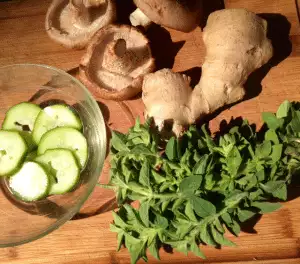-
 Art of Wellness Acupuncture & Traditional Chinese Medicine (TCM)11704 Wilshire Blvd, Suite 295, Los Angeles, CA, 90025
Art of Wellness Acupuncture & Traditional Chinese Medicine (TCM)11704 Wilshire Blvd, Suite 295, Los Angeles, CA, 90025
myartofwellness@gmail.com310-451-5522 Office Hours
MonClosedTue7:30 am --4 pmWed7:30 am --4 pmThu7:30 am -- 4 pmFri7:30 am -- 4 pmSat7:30 am -- 4 pmSunClosedOur office opens from Tuesdays to Saturdays 7:30 am to 4 pm, will be closed on Memorial day, Independent day, Labor day, Thanksgiving day, Christmas and New year.
-
Recent Posts
- Chinese New Year 2026: Year of the Horse
- Acupuncture and TCM Treatment for Perimenopause Symptoms
- How to Treat Insulin Resistance With Acupuncture and TCM
- How to Treat Metabolic Syndrome With Acupuncture and TCM
- How to Treat Syncope With Acupuncture and TCM
- How to Treat Thoracic Outlet Syndrome With Acupuncture and TCM
- How to Treat Dupuytren’s Contracture With Acupuncture and TCM
- How to Treat Nutcracker Syndrome With Acupuncture and TCM
- How to Treat Rosacea With Acupuncture and TCM
- How to Treat Perioral Dermatitis With Acupuncture and TCM
- Lymphatic Drainage With Acupuncture and TCM
- How to Treat Turf Toe With Acupuncture
- How to Treat Nerve Pain With Acupuncture and TCM
- How to Treat Watery Eyes With Acupuncture and TCM
- How to Treat Ovarian Cysts With Acupuncture and TCM
- How to Treat Dystonia With Acupuncture and TCM
- Sign up to receive news and updates and get my free report:“The Top 10 Reasons to Try Acupuncture”

November 2025 M T W T F S S 1 2 3 4 5 6 7 8 9 10 11 12 13 14 15 16 17 18 19 20 21 22 23 24 25 26 27 28 29 30
Diet
Nutrition for Heart Health OM Nutrition & Hypertension
 Oriental medicine (OM) nutrition combines ancient wisdom with modern science. OM nutrition is a holistic approach, which aims to balance all five flavors within most meals with one or two flavors being emphasized for therapeutic purposes. OM nutrition for a hypertension emphasizes bitter flavors, sour flavors and energetically-cooling foods.
Oriental medicine (OM) nutrition combines ancient wisdom with modern science. OM nutrition is a holistic approach, which aims to balance all five flavors within most meals with one or two flavors being emphasized for therapeutic purposes. OM nutrition for a hypertension emphasizes bitter flavors, sour flavors and energetically-cooling foods.
OM theory states the bitter flavor benefits the heart in moderation but an excess is harmful as it has a drying effect; for example, coffee is bitter. In moderation coffee acts as vasodilator increasing circulation but in excess it can raise blood pressure and has a diuretic effect. Modern scientific research has discovered while the human genome has 25 bitter taste receptors 12 of these are expressed in the human heart. continue reading
Eating to Reduce and Prevent Inflammation
By Xiaomei Cai, L.Ac., Ph.D.
We usually think of inflammation as something that affects our muscles and joints, causing them to swell and ache. More recently, science has made it clear that inflammation is also part of what causes poor blood flow through the arteries, causing problems of the circulation and the heart. But, really, the root cause of inflammation is a function of the metabolism, or digestive process. It is the body’s normal defensive response to excess internal heat. Excess heat can be caused by stres s, too many calories, and the wrong kinds of foods.
s, too many calories, and the wrong kinds of foods.
An anti-inflammatory diet is, first and foremost, a low calorie diet. The meaning of “calorie” is, after all, a unit measurement of heat energy. Simply put, ingesting more calories creates more heat in the body. If the calories aren’t being burned through physical activity, then they are stored in the body as excess fat. Fat not only weighs you down, but triggers the immune system, which tries to attack the fat as if it was a foreign substance. Carrying excess fat acts on several levels to create detrimental inflammation within the body.
It is important to pay attention not only to what you eat, and how much, but also how you eat, and when. Many people’s eating habits lead to poor digestion.
Eat sitting down. The body draws both blood and Qi into its center – the stomach and spleen – in order to digest food. Eating while standing or walking, or trying to concentrate on some other problem, draws much-needed energy to the extremities or the brain, away from the digestive process.
Chew food thoroughly. Failure to chew adequately means that the rest of your digestive system has to work harder to break down your food into usable nutrition.
In general, choose more fresh, raw, and lightly cooked foods, and avoid baked, fried and heavily processed foods. These foods retain the heat energy that was used in their preparation, and that creates more heat inside you.
Increase your use of ginger, turmeric and herbs like rosemary, thyme, and oregano, all of which have anti-inflammatory properties. Choose high Omega-fatty-acid fish such as salmon, and good quality fish oils. Eat lots of leafy greens. Avoid coffee, and drink green tea instead. Fermented foods such as pickles, sauerkraut/kimchee, miso and tempeh help to heal and promote good balance in the intestines. Shitake mushrooms are a source of copper, a rare nutrient, important in the prevention of arterial inflammation.
It probably comes as no surprise that we recommend cutting back on unhealthy fats (trans fats, processed cooking oils, and fatty red meat). And avoid sugar as strictly as possible, as sugar consumption leads to insulin resistance and is a major cause of inflammation.
Avoid the nightshade vegetables: peppers, eggplants, potatoes and tomatoes. This includes spices and seasonings made from peppers, such as paprika and red pepper flakes. These foods can irritate the intestines, affecting their permeability and setting off unwanted immune responses. These in turn lead to inflammation, muscle spasms and stiffness.
7 Ways to Communicate Healthy Habits to Your Kids

As the school year kicks back into gear so should the healthy habits that you and your children have before practiced. Notice how I said “practiced,” because we all know during the summer-vacation months we tend to indulge a little. Maybe you have had one too many backyard barbecues, or three too many trips to the favorite ice cream shop down the street. Whatever your summer vice may be don’t worry about it, you can regain those healthy habits from before and introduce them into your children’s lives! continue reading
Natural Ways to Up Your Game
In addition to using acupuncture and other forms of traditional Chinese medicine, there are other ways athletes seek to up their game. One of the simplest ways to increase performance is by watching what you are consuming. You ever heard the saying you are what you eat? Chances are you have, if not, well I am glad that now you have, because there could not be a truer statement. continue reading
6 Truths About the Not-so-sweet Side of Sugar
 A study published by the JAMA Internal Medicine found that more than 70 percent of Americans consume more than the recommended daily amount of sugar. Sadly, most of us are addicted to sugar, which happens to be hidden in most of the foods and drinks we consume. Added sugar can cause a whole array of problems that can be short term as well as long term. If you are experiencing health problems, lowering your sugar intake may be one of your best options. Below are 10 truths about the ugly side of sweets. continue reading
A study published by the JAMA Internal Medicine found that more than 70 percent of Americans consume more than the recommended daily amount of sugar. Sadly, most of us are addicted to sugar, which happens to be hidden in most of the foods and drinks we consume. Added sugar can cause a whole array of problems that can be short term as well as long term. If you are experiencing health problems, lowering your sugar intake may be one of your best options. Below are 10 truths about the ugly side of sweets. continue reading